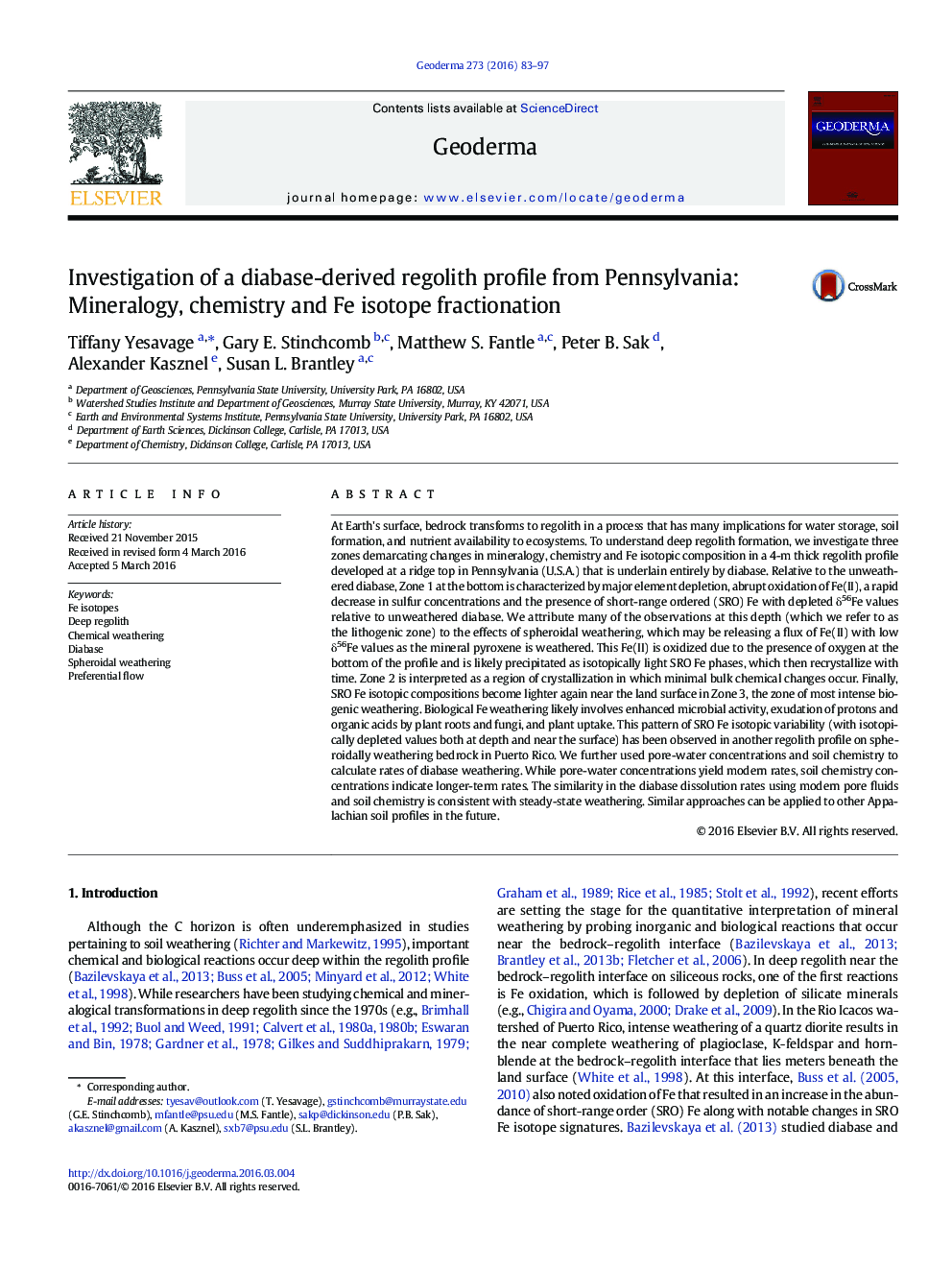| کد مقاله | کد نشریه | سال انتشار | مقاله انگلیسی | نسخه تمام متن |
|---|---|---|---|---|
| 6408340 | 1629444 | 2016 | 15 صفحه PDF | دانلود رایگان |

- Goal to understand chemical and isotopic changes within a regolith profile.
- Three distinct zones inferred from chemistry and Fe isotope data.
- Similar Fe isotopic composition to another site in Puerto Rico.
- We analyzed pore-water composition over time.
- Similar dissolution rates calculated from solute concentrations and mineralogy.
At Earth's surface, bedrock transforms to regolith in a process that has many implications for water storage, soil formation, and nutrient availability to ecosystems. To understand deep regolith formation, we investigate three zones demarcating changes in mineralogy, chemistry and Fe isotopic composition in a 4-m thick regolith profile developed at a ridge top in Pennsylvania (U.S.A.) that is underlain entirely by diabase. Relative to the unweathered diabase, Zone 1 at the bottom is characterized by major element depletion, abrupt oxidation of Fe(II), a rapid decrease in sulfur concentrations and the presence of short-range ordered (SRO) Fe with depleted δ56Fe values relative to unweathered diabase. We attribute many of the observations at this depth (which we refer to as the lithogenic zone) to the effects of spheroidal weathering, which may be releasing a flux of Fe(II) with low δ56Fe values as the mineral pyroxene is weathered. This Fe(II) is oxidized due to the presence of oxygen at the bottom of the profile and is likely precipitated as isotopically light SRO Fe phases, which then recrystallize with time. Zone 2 is interpreted as a region of crystallization in which minimal bulk chemical changes occur. Finally, SRO Fe isotopic compositions become lighter again near the land surface in Zone 3, the zone of most intense biogenic weathering. Biological Fe weathering likely involves enhanced microbial activity, exudation of protons and organic acids by plant roots and fungi, and plant uptake. This pattern of SRO Fe isotopic variability (with isotopically depleted values both at depth and near the surface) has been observed in another regolith profile on spheroidally weathering bedrock in Puerto Rico. We further used pore-water concentrations and soil chemistry to calculate rates of diabase weathering. While pore-water concentrations yield modern rates, soil chemistry concentrations indicate longer-term rates. The similarity in the diabase dissolution rates using modern pore fluids and soil chemistry is consistent with steady-state weathering. Similar approaches can be applied to other Appalachian soil profiles in the future.
Journal: Geoderma - Volume 273, 1 July 2016, Pages 83-97